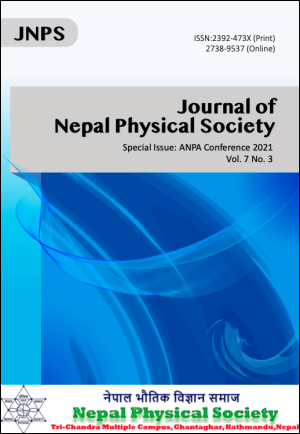Superconducting Radio Frequency Resonators for Quantum Computing: A Short Review
DOI:
https://doi.org/10.3126/jnphyssoc.v7i3.42179Keywords:
Superconducting Radio Frequency Resonators, Quantum ComputingAbstract
Superconducting radiofrequency (SRF) technology is being used not only in discovery science programs and basic research but also for several applications that benefit society more directly. The advantage of superconducting resonators over those made of normal-conducting metal is their ability to store electromagnetic energy with much lower dissipation. The high-quality factor and longer dissipation time provided by these superconducting resonators can deliver superior performance. Currently, the quantum processing architecture uses resonators and interconnecting circuits operating in the microwave regime with superconducting strip-line technology and low noise electronic devices for switching and communication. The performance of these devices can be enhanced by embedding them in 3D SRF cavity resonators to prolong the coherence time, which improves the utility of the device by reducing error rates and allowing more manipulations (calculations) before the quantum state decays. Here, we present a short review of current microwave technology used in quantum computers and progress towards the 3D resonators to enhance the
coherence time.
Downloads
Downloads
Published
How to Cite
Issue
Section
License
All right reserved. No part of this Journal may be reproduced in any form or by any electronic or mechanical means, including information storage and retrieval system, without permission in writing from the publisher, except by a reviewer who may quote brief passage in a review. The views and interpretation in this journal are those of author(s) and they are not attributable to the NPS.




